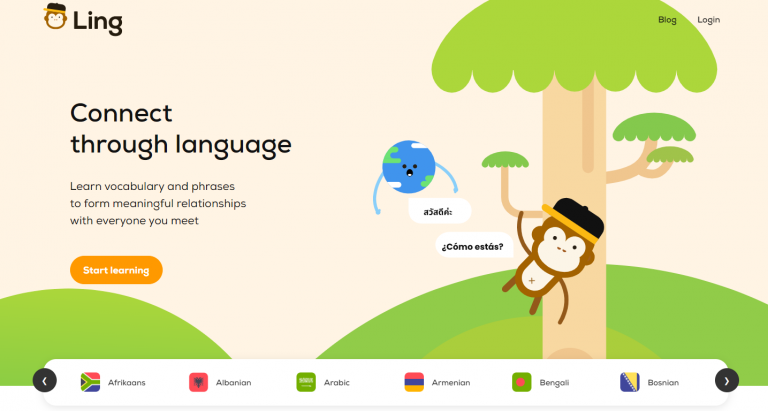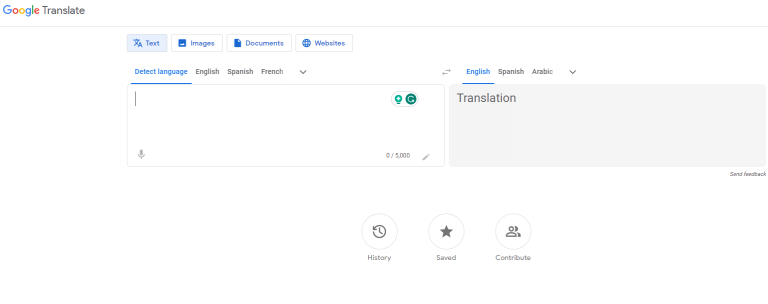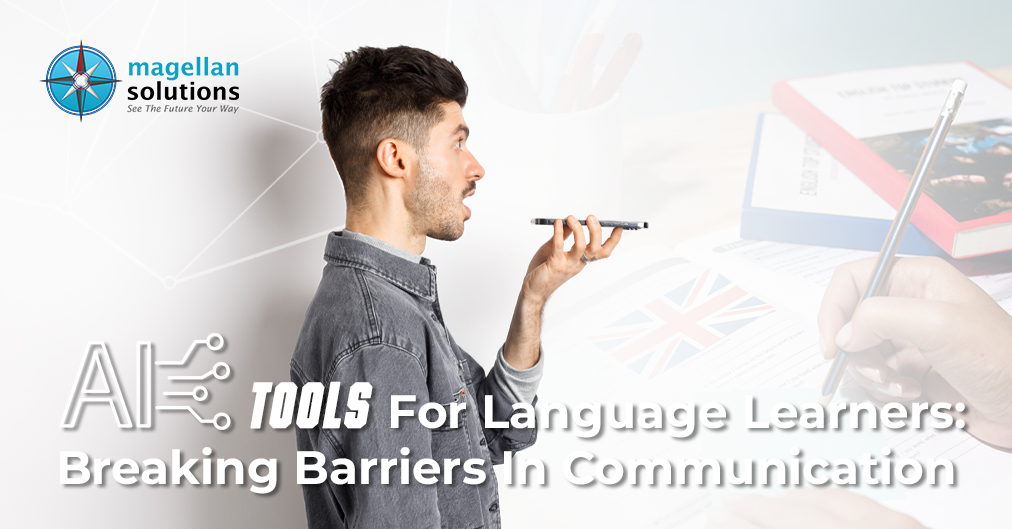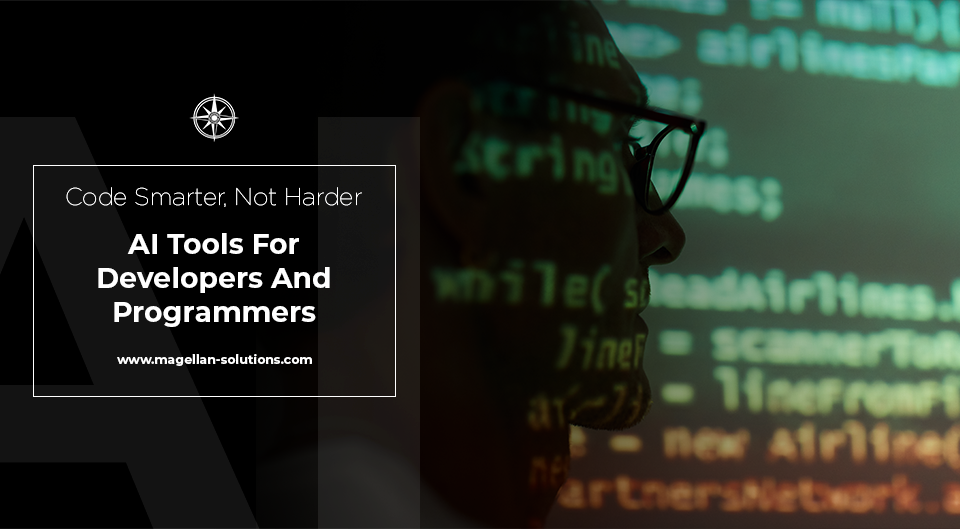Schedule a call with our outsourcing expert now and get a precise quotation that meets your requirements. Don't wait - get started today!
Language learning has become a key factor in bridging cultural gaps and is essential in developing personal and professional backgrounds. However, learners often need help with overcoming obstacles in language acquisition. Good thing AI language tools expand the language learning resources that give learners the freedom when, where, and how to learn a language. Gone are the days when hiring a translator or a tutor was the only learning option.
In this article, we’ll explain how AI tools can change language learning by overcoming communication barriers.
Breaking Barriers in Communication Through AI-Language Tools
Here are the ways how AI tools assist in language learning:
-
Speech Recognition and Translation Tools
Real-time speech recognition and translation tools have transformed language learning. Learners can now converse with native speakers, even if they haven’t achieved fluency.
These tools offer instantaneous translation through AI algorithms, enabling learners to comprehend and respond effectively. AI-language tools do more than translate. They also give instant feedback on pronunciation and help reduce accents to improve language learning.
-
Language Learning Chatbots and Virtual Assistants
AI-powered chatbots and virtual assistants have become partners in making the language learning process convenient to whoever needs it. These intelligent conversational agents simulate real-life interactions, allowing learners to engage in lifelike dialogues and receive immediate feedback.
These chatbots provide personalized tutoring and adapt to individual needs and skill levels, making language learning more effective and tailored.
-
AI-based Language Correction and Writing Assistance
For many language learners, writing poses a significant challenge. However, AI-based language correction tools have proven to be invaluable resources. These tools automatically detect and rectify grammatical errors, offer suggestions to enhance writing accuracy and clarity, and guide vocabulary usage.
By utilizing AI’s capabilities, learners can improve their writing skills, gain confidence in expressing themselves effectively, and become more proficient writers.
5 AI-Language Learning Tools
These are some of the useful AI-language learning tools that are commonly used for their user-friendly interface and ease of use:
1. Ling App


One notable feature of Ling App is its AI-powered chatbot. Users can practice their language skills by engaging in conversational exercises with the chatbot. The chatbot utilizes AI algorithms, providing realistic and interactive dialogues. Hence, users can practice speaking and listening skills in simulated real-life conversations.
2. Rosetta Stone


This AI-powered language learning program uses speech recognition technology to provide real-time pronunciation and language proficiency feedback. It offers interactive lessons, immersion exercises, and personalized coaching to enhance language acquisition.
3. Google Translate


Google Translate is a widely used AI-powered translation tool. It uses machine learning algorithms to provide instant translation between multiple languages. Users can input text, images, or even voice recordings for translation.
4. Babbel


Babbel is an AI-powered language-learning app that offers courses in various languages. It focuses on practical language skills, including conversation, vocabulary, and grammar. The app uses AI algorithms to adapt lessons to learners’ needs and progress.
5. Readlang


Readlang is an AI-powered tool designed to improve reading skills in foreign languages. It offers a browser extension that allows users to read online content while providing instant translations and vocabulary assistance.
Advantages of AI-Language Tools for Learners
Below are the advantages of using AI tools for language learning:
- Enhanced Accessibility to Language Learning Resources
AI tools have significantly enhanced language learning by increasing accessibility to learning resources. Learners can access AI-powered platforms anytime and anywhere without worrying about location and time constraints.
- Personalized and Adaptive Learning Experiences
These tools adapt to each individual’s unique needs and learning styles, providing targeted instruction and practice. AI tools enhance language learning by tailoring the process to individual needs. They assist learners in progressing at their own pace and achieving optimal results.
- Continuous Learning and Practice Opportunities
AI-powered chatbots and virtual assistants offer learners continuous learning and practice opportunities. These tools can be accessed anytime, ensuring consistent practice. Constant exposure and training help learners quickly acquire language skills and become fluent, boosting their confidence in real-life communication.
Potential Challenges and Limitations of AI-Language Tools
While AI tools offer benefits, being aware of potential challenges and limitations is essential.
- Balancing Technology and Human Interaction
Reducing human interaction is potentially risky as learners increasingly rely on AI tools. Language learning is not just about linguistic proficiency but also about building connections with people and cultures. AI tools are convenient, but learners should have real-life conversations to develop their communication skills fully.
- Accuracy and Limitations of AI Translation and Language Correction
Despite significant advancements, AI translation and language correction tools have their limitations. Nuances and cultural references may sometimes be lost or inaccurately translated. Learners must acknowledge limits and use human help and real language sources with AI tools for accurate and culturally suitable communication. Learners’ privacy and data security must be protected, and they should have control over the data they share with these tools.
- Ethical Considerations in the Development and Use of AI Tools
Developers must ensure AI systems are trained on diverse and unbiased data to prevent stereotypes or biases. Learners’ privacy and data security must be protected, and they should have control over the data they share with these tools.
The Future Of AI For Language Learning
Looking ahead, the future of AI tools for language learners appears promising. Advancements will continue to enhance their effectiveness and capabilities. Integration with virtual reality (VR) and augmented reality (AR) will provide learners with immersive language learning experiences, fostering engagement, interaction, and cultural influence in ways previously unimaginable.
Conclusion
These AI tools empower learners to overcome challenges and communicate effectively in new languages. From real-time speech recognition and translation to interactive chatbots and virtual assistants, AI tools offer personalized learning experiences, continuous practice opportunities, and enhanced accessibility to language learning resources.
While AI tools have limitations, they provide invaluable support for an individual’s language learning journey. By harnessing the power of AI, learners can explore a transformative linguistic adventure, embracing cultural diversity and fostering global communication across borders.
Break Language Barriers and Expand Your Global Presence!
If you have non-English speaking customers, don’t turn them away! As one of the trusted multilingual call center service providers for over 18 years, we can help expand your global presence through the help of AI learning tools.
Applying these technological advances to your business may seem intimidating, but Magellan Solutions is here to help you. Send us a message for a free 60-minute consultation, and let’s see how we can assist your business to succeed.
TALK TO US!
Contact us today for more information.














